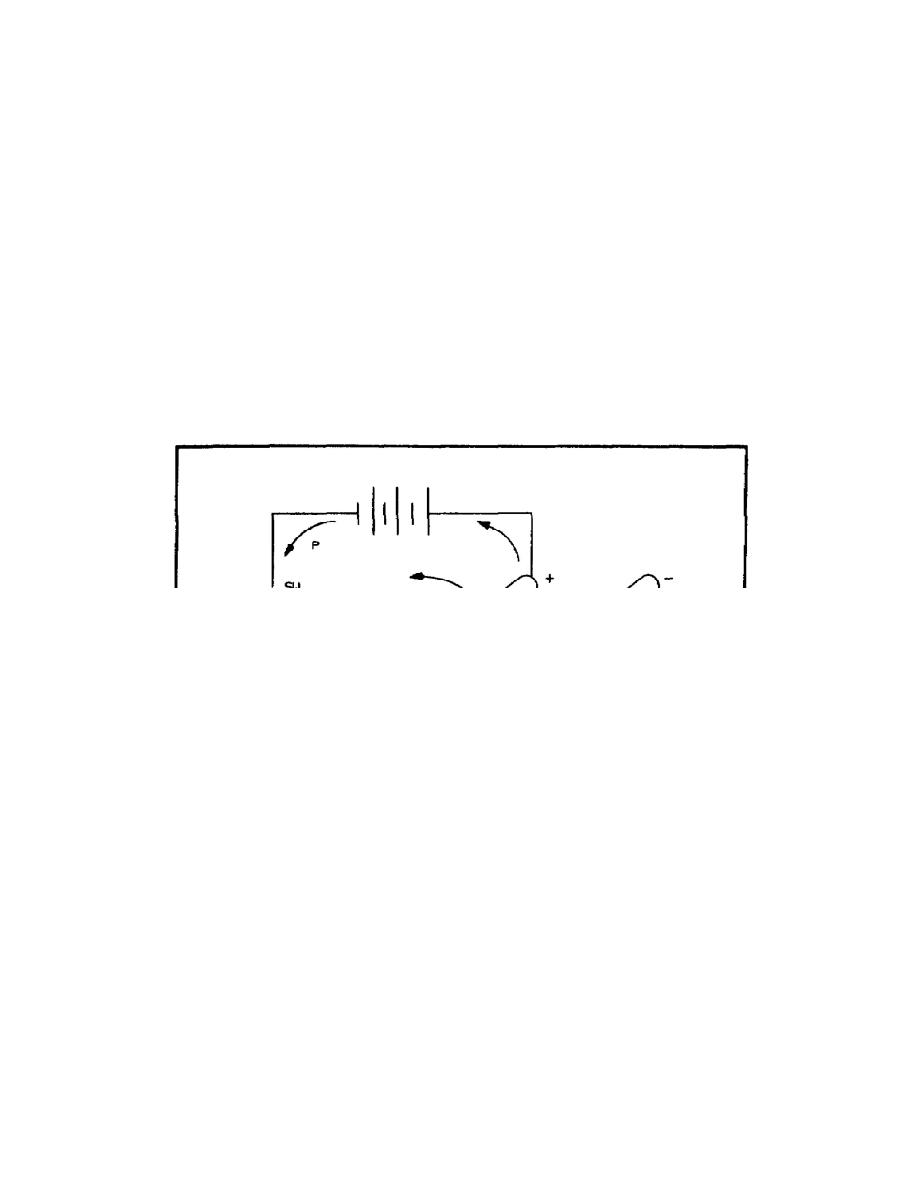
MM0704, Lesson 4
induced voltage, however, is an instantaneous action. When the current in the primary has reached its maximum value,
the resultant magnetic field is at its maximum strength. The field, under this condition, is neither expanding from nor
collapsing back into the primary loop. This being the case, the flux is not cutting the secondary loop, and no voltage is
induced in it. This does not mean that the magnetic field is not present. The magnetic field is still there, since it is
being sustained by the current flow in the primary. As long as the current flows at a steady rate, the flux about the
conductor is maintained at a steady strength, neither expanding nor collapsing, resulting in no field motion and no
induced voltage.
Notice in figure 4-1, the instantaneous voltage that is induced in the secondary when the circuit is closed is of opposite
polarity to the voltage in the primary.
In figure 4-1, what can you expect when the switch in the primary is opened? First of all, since the circuit is broken,
current will cease to flow. Since the magnetic field about the primary was dependent on the current to sustain it, the
field must necessarily collapse. As the field collapses back into the primary, it again cuts through the secondary, this
time in the direction opposite to that when it was expanding. This motion again induces a voltage in the secondary.
Since the field is cutting through the secondary loop in the reverse direction, the voltage induced is of the opposite
polarity to that induced when the switch is closed.


 Previous Page
Previous Page
